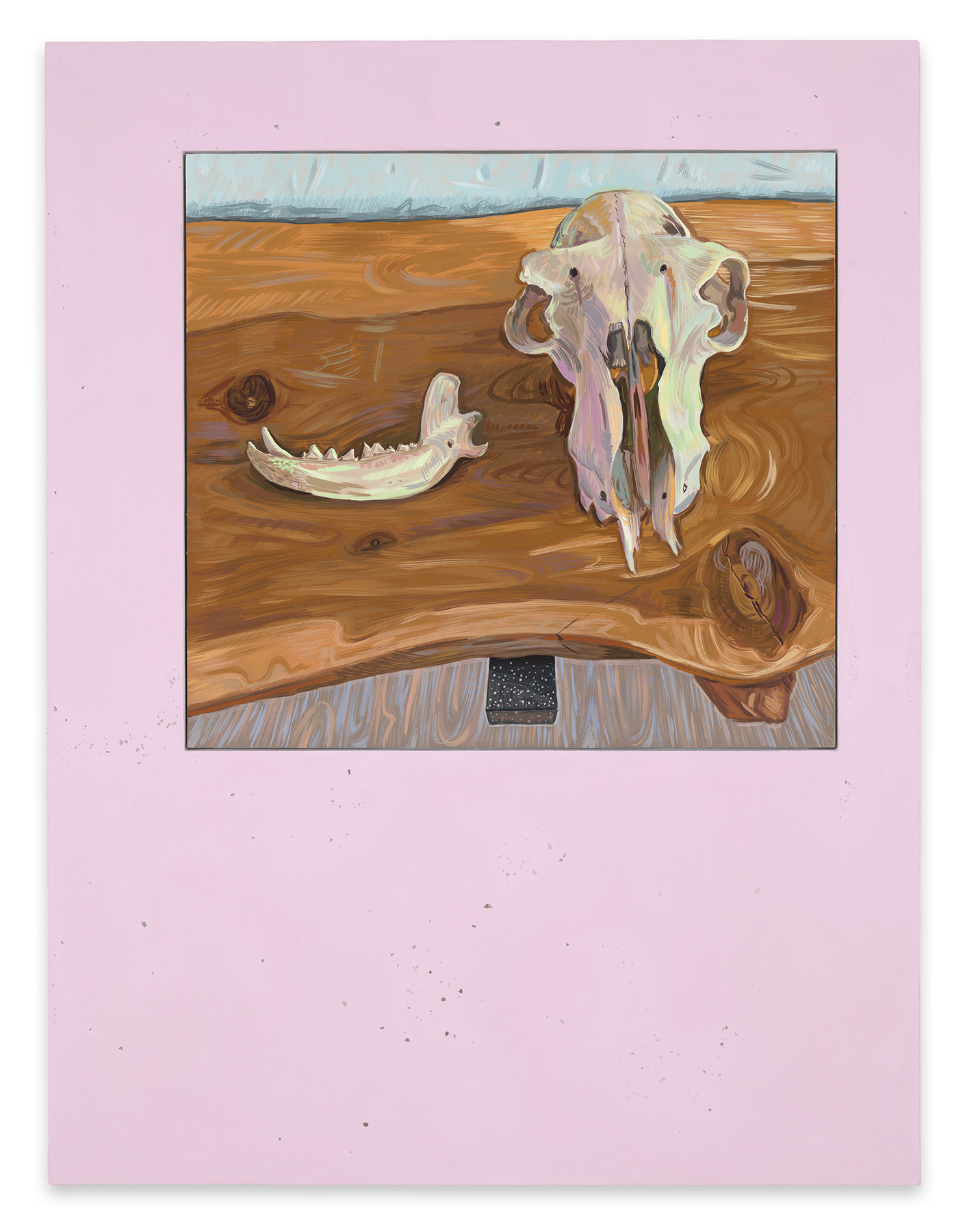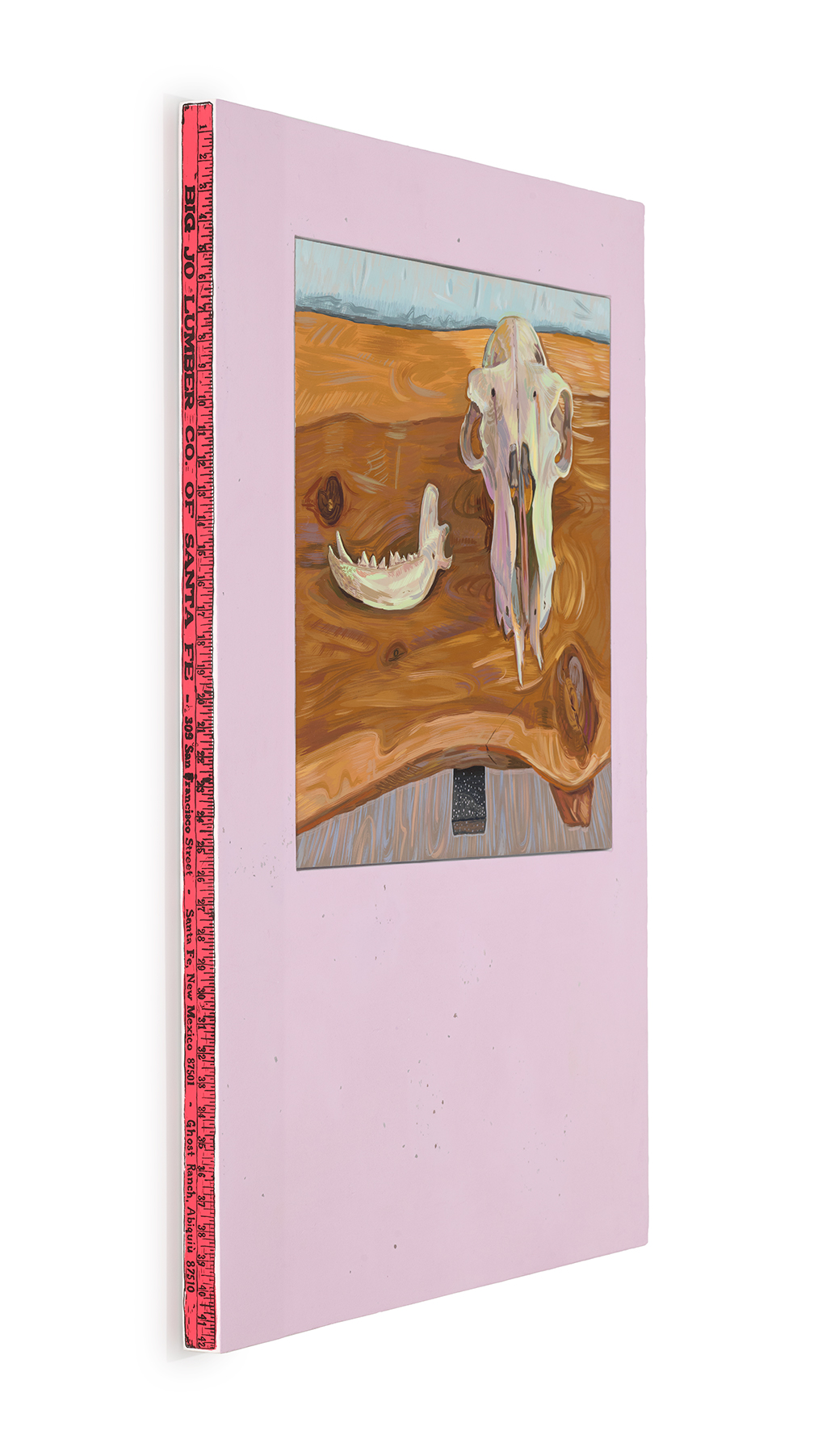O’Keeffe’s Skulls
| Artist | Josephine Halvorson |
| Year | 2019-20 |
| Dimensions | 42 x 32 inches (106.7 x 81.3 cm) |
| Medium | Gouache, site material, and screen print on panels |
| Credit | Private collection |
The droughts of the 1930s devastated both wild and domestic animals in New Mexico, littering the landscape with their bones. O’Keeffe collected the sun-bleached skulls, antlers, and jawbones of steers and local wildlife on her walks. Many of these bones—often interpreted as symbols of mortality—appeared in her paintings, eventually becoming synonymous with her aesthetic. Halvorson, who found the bones pictured here in O’Keeffe’s collection at Ghost Ranch, considers this painting a reflection on O’Keeffe’s legacy.

